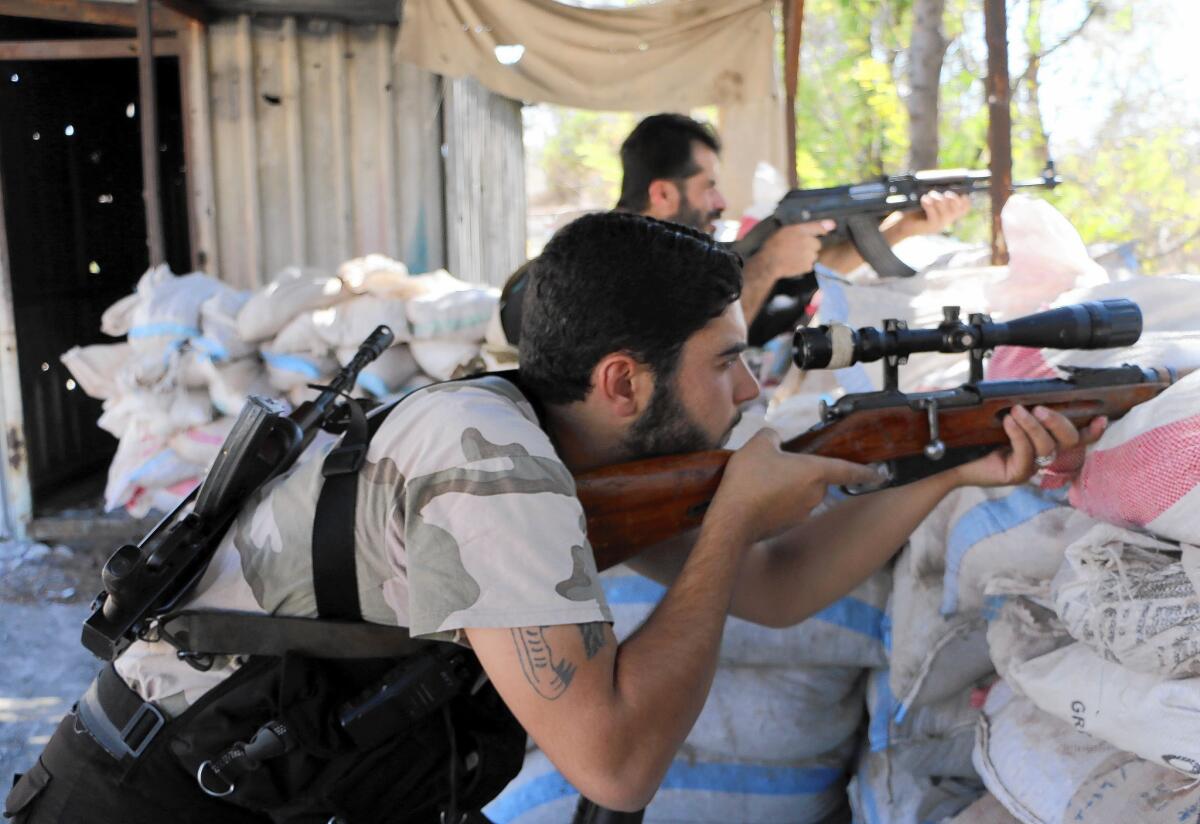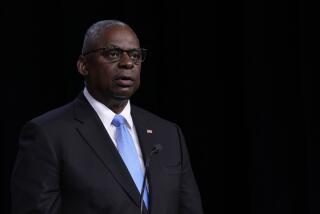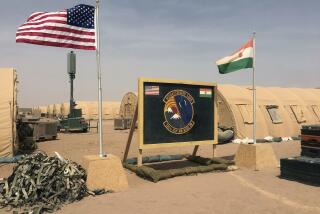U.S. operation may only halt, not destroy, Islamic State, officers say

The military offensive ordered by President Obama against marauding Islamic State militants barely resembles the grinding ground war that the United States waged in Iraq from 2003 to 2011, but may prove just as tough to win.
Rather than U.S. combat troops fighting street by street in Iraqi cities and towns, the new strategy is based on an escalation in U.S. bombing and on at least 1,600 American military advisors and others working with the Iraqi army, Kurdish fighters and sectarian militias to drive the extremists from Iraq, and eventually defeat them in neighboring Syria.
In his prime-time speech Wednesday, Obama compared his plan to U.S. counter-terrorism operations in Yemen and Somalia, where the CIA and Pentagon have carried out drone strikes, special operations raids and other missions against extremist groups while training and advising government troops.
Shabab in Somalia and Al Qaeda in the Arabian Peninsula in Yemen remain lethal and ambitious, but officials contend that the U.S. efforts have helped keep the threat contained while periodically knocking off key leaders.
That may be all Obama can realistically expect using airstrikes and proxy ground forces against an enemy as resilient and fanatical as the Sunni Muslim fighters who swept out of Syria last year and have captured about a third of Iraq, according to current and former military officers with experience in Iraq.
“Even if everything goes right, which is never a safe assumption in combat, we are looking at a long and difficult campaign that probably won’t destroy the threat but might be able to neutralize it for a while,” said a senior U.S. military officer who was briefed on the strategy and who spoke on the condition of anonymity because he was not authorized to discuss it.
In a sign of the new campaign, the Pentagon plans to base U.S. warplanes in Iraq for the first time since Obama on Aug. 7 authorized airstrikes to protect Americans and to support humanitarian missions. The aircraft will operate from the northern city of Irbil, officials said.
The Pentagon would not identify the type or number of planes, describing them only as “manned and armed” aircraft for intelligence and surveillance. That fits the AC-130 gunship, which carries sophisticated cameras and weapons that can bring devastating fire on ground targets.
Basing the gunships closer to Islamic State positions in Iraq will make U.S. drones, which have carried out many of the 156 airstrikes so far, available to increase intelligence-gathering flights over Syria, U.S. officials said.
Several hundred U.S. special operations troops will advise Iraqi security forces, embedding “at the brigade level and above,” said Rear Adm. John Kirby, the Pentagon press secretary.
It’s unclear how many Iraqi brigades, which can range from several hundred to several thousand soldiers, will get U.S. advisors. Many Iraqi units surrendered or collapsed when attacked by Islamic State fighters. Tens of thousands of Iraqi soldiers reportedly abandoned their weapons and fled.
U.S. officials are counting on the return of American advisors, many of whom served multiple tours in Iraq, to give a psychological boost to the Iraqi army. The new U.S.-backed government in Baghdad will begin reconstituting army units, but whether they will prove more resolute in battle remains to be seen.
The White House plan also calls for backing sectarian militias similar to the Sons of Iraq, the Sunni tribal fighters who fought against Al Qaeda in Iraq and helped stabilize Anbar province during the height of the civil war in 2007 and 2008.
With power-sharing by the Shiite-dominated government in Baghdad, as well as new weapons and cash payments, U.S. officials hope to peel away the Sunni tribes that have joined the Islamic State’s ranks, officials said.
The Syrian part of the White House strategy remains far from decided, officials said.
Obama made it clear Wednesday that he is prepared to extend U.S. attacks into Syria. But Pentagon officials acknowledge their intelligence on the Islamic State remains sketchy, especially regarding the whereabouts and makeup of its leadership.
For now, the Pentagon says airstrikes in Syria are possible only after it gains better intelligence and after initially focusing on driving the extremists out of northern and western Iraq.
“We’re not at the point yet” of attacking targets in Syria, a senior military officer said. Whether they eventually are approved “depends on a lot of different factors,” he said, including whether more-moderate Syrian fighters can be trained and armed to take over if the Islamic State is sufficiently weakened.
Obama’s strategy will limit American casualties, which is likely to maintain public support. It is also likely to achieve visible gains quickly, as an increase in airstrikes destroys additional Islamic State positions, equipment and convoys.
But airstrikes alone probably can’t drive the militants from Mosul, Fallouja, Ramadi and other cities they have captured. Iraqi troops will have to bear the brunt of urban battles.
In any case, the Islamic State has proved to be an adaptable and sophisticated fighting force, and it may change tactics to meet the challenge.
Instead of acting like an army, moving in formations and convoys, and governing captured towns and territory, Islamic State forces are likely to disperse to avoid U.S. attacks.
U.S. officials say more than 1,000 people with Western passports have gone to fight in Syria, and some may pose a potential danger when they come home. Declaring war on Islamic State could backfire and spur an even larger flow of foreign fighters to join the group, as happened during the Iraq war.
Obama’s citing Yemen and Somalia as relevant counter-terrorism cases also sparked criticism Thursday. White House officials say they are examples of how U.S. forces can degrade extremist groups even if they can’t eliminate them.
Although neither country “has been turned into a Jeffersonian democracy,” the U.S. has helped roll back extremist gains and has “had success in degrading the threat that those organizations pose,” said White House spokesman Josh Earnest.
In Yemen, the U.S. has helped train an effective counter-terrorism force that has driven Al Qaeda in the Arabian Peninsula out of much of the southern part of the country that it had seized last year. But U.S. intelligence still considers the group, which has repeatedly sought to launch attacks on America, as the most lethal Al Qaeda franchise.
In Somalia, a U.S.-backed force of African troops has driven Shabab out of the capital, Mogadishu, and a U.S. airstrike killed the group’s leader last week.
But Shabab remains a potent threat in Somalia’s hinterland, and is mounting an effective campaign of suicide bombings and attacks on high-profile Western targets, including an upscale shopping mall in neighboring Kenya last year.
If pushing Islamic State out of Iraq and crushing it in Syria proves equally difficult, Obama or his successor could face a difficult decision to escalate the U.S. involvement or accept that a limited American role in Iraq will be necessary for years.
Times staff writer Kathleen Hennessey in Washington contributed to this report.
More to Read
Sign up for Essential California
The most important California stories and recommendations in your inbox every morning.
You may occasionally receive promotional content from the Los Angeles Times.










